Research and facilities
Research and facilities
Our research
Macquarie University has a strong reputation for research excellence, and our students benefit greatly from involvement in innovative projects using cutting-edge technologies, mentored by our internationally recognised research academics.
Explore some of our areas of research in the links and videos below:
Meet some of our early- and mid-career researchers as they explain the focus of their research projects:
Biggest, smallest war – against antibiotic resistance
Dr Amy Cain aims to tackle the terrifying problem of antibiotic resistance occurring world-wide. She uses functional genomics techniques to find the genes that cause antibiotic resistance in nasty bacterial pathogens and the Galleria caterpillar animal model to develop much-needed new antibiotics.
Biomanufacturing with bugs
New technologies are needed to create a circular economy where waste streams all have value and landfills are no longer needed. Dr Maciej Maselko's research group is working towards this by engineering insects to make enzymes normally found only in bacteria and fungi. The engineered insects fed various waste streams, degrade hazardous chemicals that may be present, and produce high value products for industrial applications.
Manipulating the gut microbiome
Dr Hasinika Gamage’s research is on the gut microbiome (the trillions of microorganisms inhabiting the colon) and its importance. Hasinika comments on her investigations on the role of the gut microbiome in colorectal cancer and neurodegenerative disease and on developing microbiome-based therapies to prevent or treat them.
Lab in a droplet
Dr Ming Li’s research aims to identify and select rare, valuable single cells with properties of interest from large cell populations, by developing droplet microfluidic technologies.
Tracking the effects of psychedelics
Can very small doses of psychedelic compounds change our brains, physiology and behaviour? Dr Vince Polito is using neuroimaging, psychometric assessments, and biomarker analyses to explore the clinical applications and cognitive enhancement potentials of serotonergic hallucinogens.
Facilities
Macquarie University has world-class research facilities on-site, offering our students and researchers training and access to state-of-the-art technologies and equipment.
This experience advances our graduates ahead of the crowd, ready to meet the challenges of real-world industries in the international biotechnology sector.
The Australian Proteome Analysis Facility (APAF)
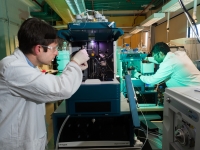
The Australian Proteome Analysis Facility (APAF) is located within the Faculty of Science and Engineering at Macquarie University. APAF provides our researchers, and corporate clients, with advanced functional proteomics and protein chemistry tools integrated with in-house and commercial bioinformatics toolkits
APAF strives to answer the most challenging research questions in the life sciences, medical, agriculture, food and biotech sectors by pushing the limits of technological innovation, ensuring that our researchers continue to have access to the latest generation of advanced technologies, and thereby retain global leadership across their respective fields.
See more about the APAF.
Australian Genome Foundry
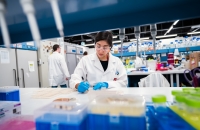
Macquarie University is home to the Australian Genome Foundry, a high throughput biofoundry which enables us to design, build, and test thousands of strains per week, to understand and unlock nature’s potential. We use the power of synthetic biology and laboratory automation to explore large biological solution spaces. We partner with academics to address fundamental biological questions, and with industry partners to engineer superior industrial microbes and proteins.
See more about the Australian Genome Foundry.
The NMR Facility
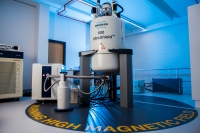
The Macquarie University NMR Facility includes the Bruker AVIIIHD 400 and 500 MHz, and AVII 600 MHz NMR Spectrometers, as well as Australia’s first parahydrogen generator. BCUII chiller units facilitate low temperature experiments, and have demonstrated unparalleled performance thanks to the exacting specifications of our new nitrogen generation system.
This significant investment in Macquarie University’s infrastructure is allowing users to routinely access temperatures down to 200K (-70C) without the use of liquid nitrogen, enabling such experiments to be carried out far more quickly and safely than at any other institution in Australia.
See more about the NMR Facility.
Zebrafish Facility
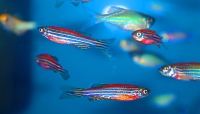
Our state-of-the-art zebrafish facility is located within an aquatic physical containment 2 (PC2) laboratory inside the larger PC2 laboratory of the Macquarie University Centre for Motor Neuron Disease Research. The facility has been specifically designed to facilitate all aspects of zebrafish work and includes microinjection facilities, microscope facilities, behavioural tracking facilities, zebrafish breeding, training services, zebrafish agistment and cryogenic freezing. The facility houses and breeds genetically modified transgenic, mutant and wild-type strains of zebrafish in an Aquatic PC2 space. The three microinjection stations allow for the generation of transient, stable, knockdown or knockout zebrafish models. The microscope facilities offer access to a range of microscopes; from phenotyping microscopes up to high end confocal and live imaging microscopes.
Find out more about the Zebrafish Facility.
Faculty of Science and Engineering Microscopy Unit
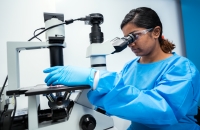
The Faculty of Science and Engineering Microscopy Unit has an outstanding suite of advanced electron and optical instruments with associated specimen preparation equipment. Microscopy staff provide appropriate training, support and expertise to researchers and students, offering a rare and valuable opportunity for analysis, and experience for future research endeavours.
See more about the Microscopy Unit.
Environmental Quality Laboratory
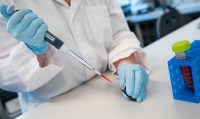
Macquarie University’s Environmental Quality Laboratory is used primarily for the structural and elemental analysis of soils, sediments, rocks, artefacts and other materials. The Lab also hosts three Hach spectrophotometers, soil hydraulics equipment (UMS Ksat, Darcy boxes) and a range of other equipment for materials analysis. Major analytical capability includes X-Ray Diffractometry (XRD), X-ray fluorescence spectrometry (XRF), and Laser Induced Breakdown Spectroscopy (LIBS).
See more about the Environmental Quality Laboratory.
